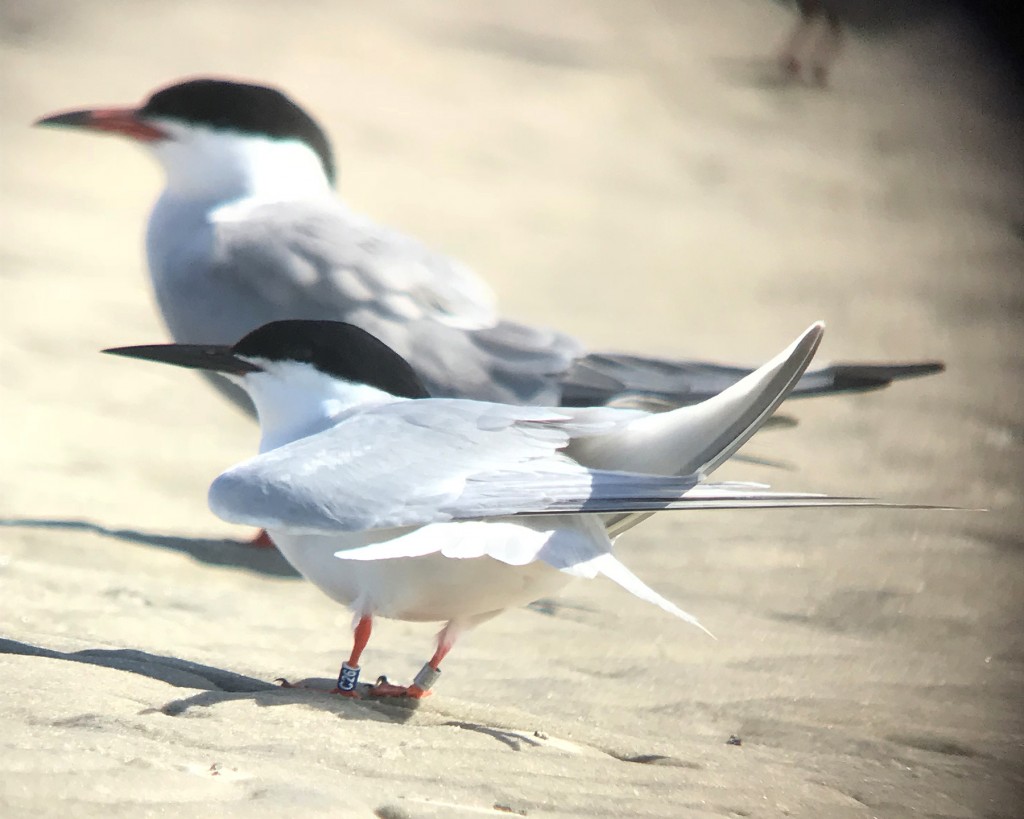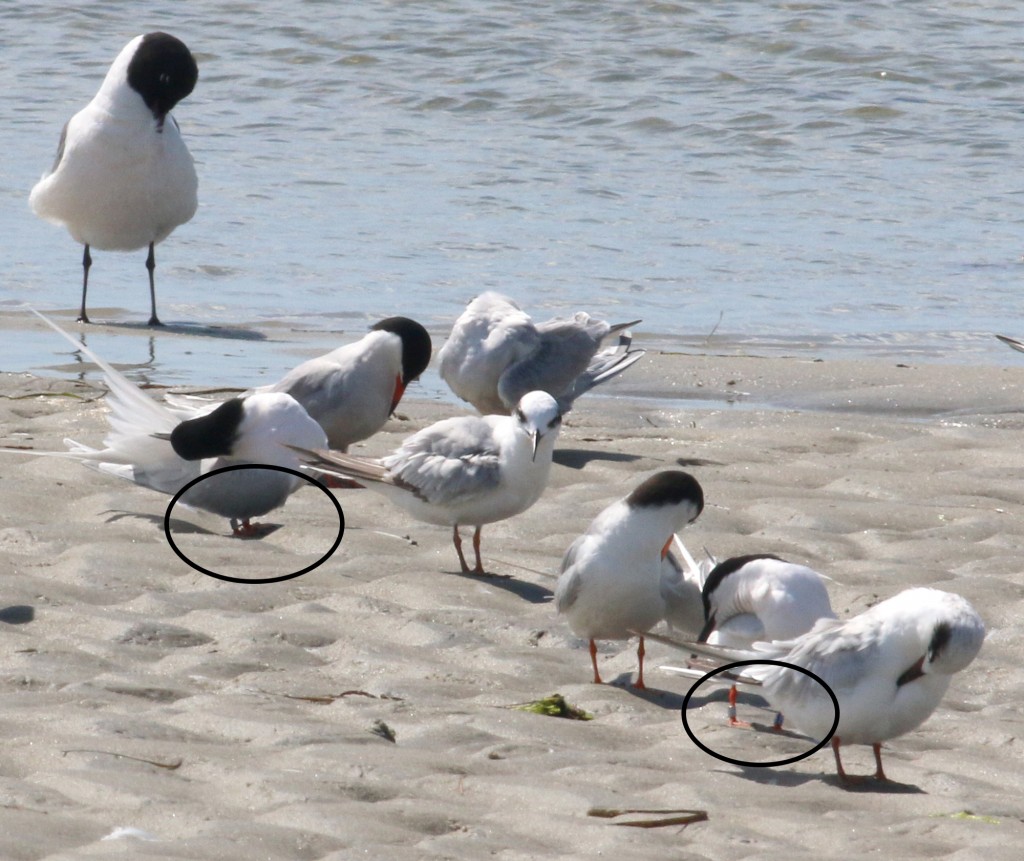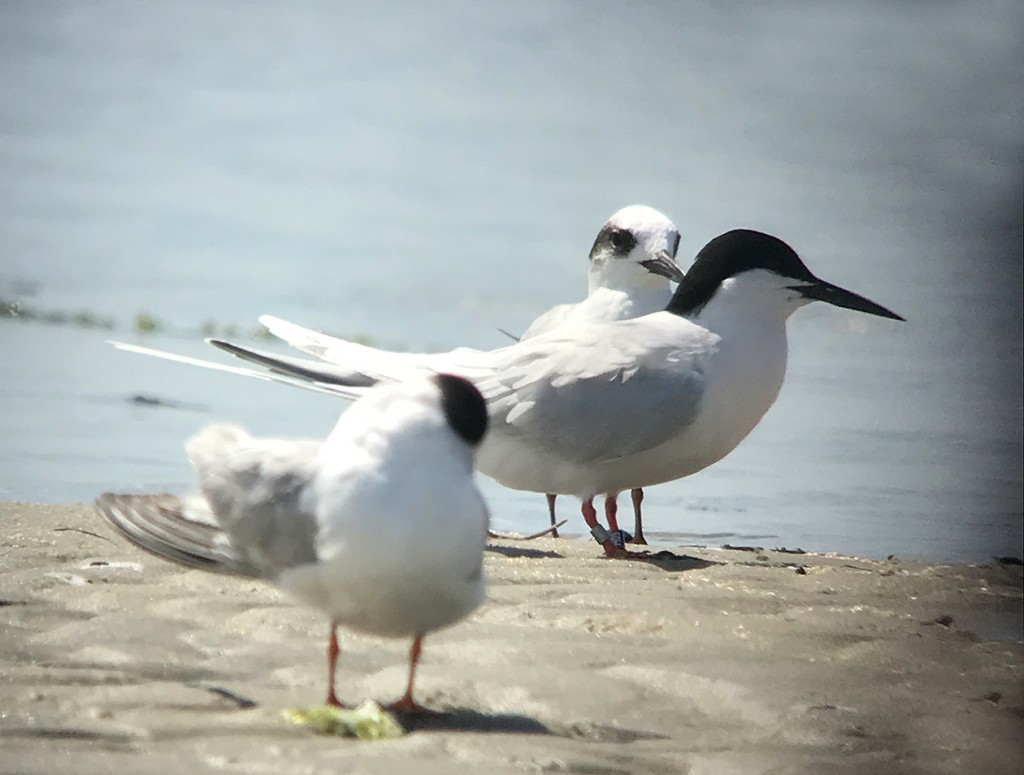Roseate Tern is one of those bird species that technically I’ve seen, but I’ve not really ‘seen’ them, if you know what I mean. I have had distant views of them in Panama and quick flight views in Tobago, but never here in NJ, and never good views that would give me confidence that I could identify them myself. The largest breeding population in the northern hemisphere nests on Great Gull Island, off the tip of Long Island NY, so they are in the general area and they appear annually in New Jersey. Yet somehow they have eluded me, and all that has combined to make it one of my ‘most desired’ targets to find myself.
Yesterday Jeanine and I headed to the Sedge Islands for some early summer birding and swimming, hoping that some interesting birds would join us. We timed it well, arriving at low tide to extensive sand flats that were populated with the expected Common and Forster’s Terns, five Least Terns, our first Royal Tern of the season, and at the inlet we were treated to our first Brown Pelican of the year. The water temps were perfect for swimming, so it was a nice successful day already. Then on the way back past the sand flats to the launch site, we stopped to search through the tern flock again. This time we spotted two Gull-billed Terns, indicating that there were new arrivals. Then we spotted something much more interesting: a very light tern with a long black bill. It was a distant view and I was unable to get a photo before it flushed with the rest of the flock, so I cursed our misfortune at missing a great opportunity. Fortunately, the flock landed on the far end of the sandflat ~200 yards away, so we walked over, and were able to re-find it, confirming that it was not our imagination or simply poor lighting giving the appearance of an all-black bill. We thought it was a Roseate Tern, but not having seen one in detail previously, we needed more confirmation and photo documentation. We got a scope view of the bird, and finally found what we were hoping for: a blue band (C26) on the left leg and a silver federal band on the right leg. That was a great indicator that we were looking at a good bird: our first Roseate Tern! Then Jeanine spotted another one nearby, but this one was unbanded. Two Roseate Terns!! The flock flushed again, split in half, forcing us to see if we could re-find the bird(s) again. This flushing-and-refinding the birds was a great exercise in trying to quickly distinguish Roseates from the more numerous Forster’s and Common Terns.

Roseate Tern C26. Note the longer and thinner all-black bill compared to the Forster’s Tern in the background.
Once again we re-found both birds, and as I was trying to get a good documentation photo of the band code, we realized that the bird we were looking at this time had yet a different band code. After a short period of confusion, we realized that we were looking at three Roseate Terns. Wow!!! Eventually we had all three birds in view at the same time. We laughed at our ridiculous good luck, smiling all the way home, with new confidence that we could identify them again in the future. The band info was reported to the bird banding lab, and we found out that as suspected these birds arrived from New York. Both were banded in 2016 on Great Gull Island, which is off of the tip of Long Island and has the largest population of nesting Roseate Terns in the northern hemisphere.

Now there were Two Roseates together, with C26 on the right in this photo, and an unbanded Roseate on the left. Here we can see the light primaries and elongated tail typical of Roseate Terns on both birds.

